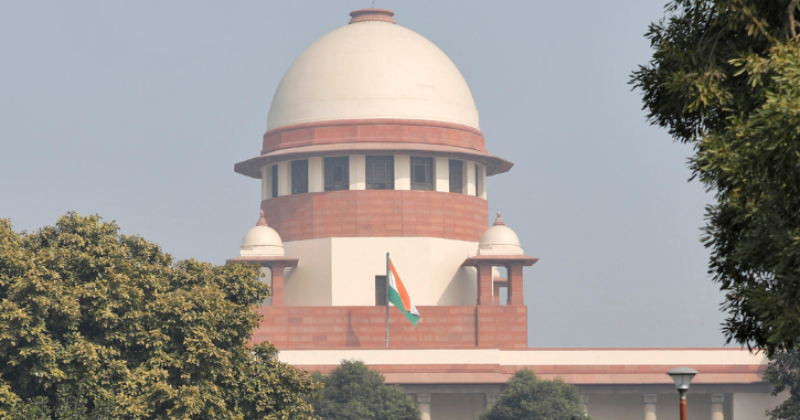The Supreme Court of India has declared that extra-judicial killings violate the fundamental right to life as enshrined in the Constitution. This came after an encounter in Uttar Pradesh, which raised concerns about the misuse of power by the police. The court has expressed its concern about the increasing number of such cases in recent years.
Atiq Ahmed’s son Asad and his aide Ghulam, who were both wanted in connection with the Umesh Pal murder case, were killed in an encounter in Jhansi. Asad was a gangster-turned-politician.
Jump To
![]()
What is Extra judicial killing?

Unsplash/Representational Image
Extrajudicial killing is the act of killing a person by the state or its agents without any legal proceedings or justification. It is illegal and violates human rights and the rule of law.
This can take different forms, such as extrajudicial executions, summary executions, and enforced disappearances. Law enforcement agencies or security forces often carry out such acts in the name of maintaining law and order or combating terrorism.
What does the Constitution say?
The Indian Constitution is based on the rule of law, which makes it the supreme power. The legislative and executive branches derive their authority from it.
The Constitution guarantees the Right to Life and Personal Liberty for everyone under Article 21. This is non-negotiable, and it is the responsibility of the police to protect it for every individual, regardless of their innocence or guilt.

Unsplash/Representational Image
The police are permitted to use force, including lethal force, to protect themselves or to maintain peace and order. Indian law recognises the right to self-defence for every individual under Section-96 of the Indian Penal Code.
Section-46 of the Criminal Procedure Code also permits the police to use force, including lethal force, to apprehend someone accused of a serious crime.
Is there any guideline?
According to the Indian Express report, encounter killings in India have decreased by 15% from 2016-2017 to March 2022, but have increased by 69.5% in the last two years. A total of 813 cases have been registered in the last six years, with Chhattisgarh having the highest number of cases at 259, followed by Uttar Pradesh with 110 and Assam with 79.
In 1997, the NHRC provided guidelines for police to register information about encounter deaths, allow independent investigation, and grant compensation to the deceased’s dependents.

Unsplash/Representational Image
In 2010, these guidelines were amended to include registering an FIR, conducting a magisterial inquiry, and reporting all death cases to the NHRC within 48 hours. After three months, a second report must be sent with the postmortem report, inquest report, and enquiry findings.
In 2014, the Supreme Court of India issued guidelines for investigating police encounters in cases of death, which included mandatory registration of a First Information Report (FIR), involving the deceased’s next of kin in the inquiry, keeping written records of intelligence inputs, and conducting an investigation by an independent agency.
The information about the incident must be sent to the National Human Rights Commission (NHRC) or the State Human Rights Commission.
These guidelines must be strictly followed in all cases of death and grievous injury in police encounters and treated as law under Article 141 of the Constitution of India.

